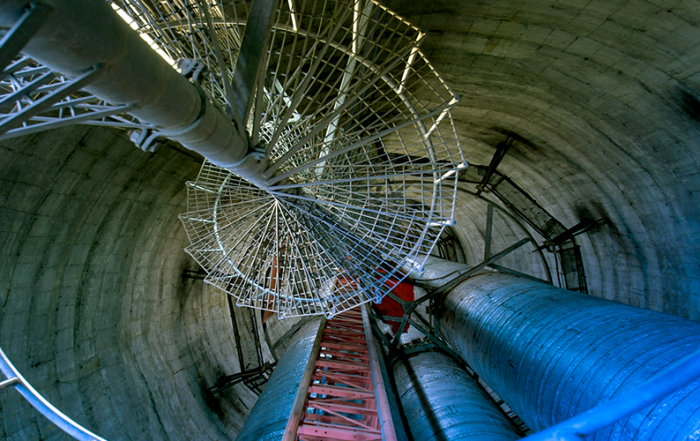Six steps to increase your engineering document control efficiency
In today’s economic environment, most EPCs and Owner Operators are stretching their budgets and resources but still striving to deliver on time-sensitive projects. Digital transformation has significantly reduced paper, but the processes themselves often remain largely manual.

Introduction
In this whitepaper, Idox’s Steven Bruce shares his experiences of working with companies running large capital engineering projects and asks the question:
“Can organisations really afford to pass up the opportunities for automation offered by technology?”
This whitepaper explores two key topics:
- Maximising the value of your existing investment in Engineering Information Management
- Increasing the efficiency of your document control team
Driving best practice document control: the automation challenge
Engineering document control is about guaranteeing that the right people can access the right document to ensure that the job
gets done safely and efficiently. For example, when issuing, superseding and re-issuing documents, the process and technology should work together to make the correct document available and make sure that any ‘wrong one’ that is currently in circulation is not used. It is also about managing the process for creation, submission, acceptance and change of these critical company records.
These days, many organisations have a digital solution in place to manage their engineering documentation but haven’t truly embraced the opportunities that digital transformation presents. The greatest hurdle is not necessarily finding the technology to apply, but understanding the actual business processes and being able to recognise those processes that would benefit from being automated. Below are a few of the many examples of engineering business processes that could be automated to save time and cost:
- Extracting engineering tags from document content to create tag to document relationships
- Reporting and expediting overdue tasks and returns
- Construction/Engineering Work Package management
- Maintenance Work Package management
- Tracking expiry of governance documents, standards and policies
- Emergency site backup of critical facility documents
Putting document control automation into practice
Challenging the status quo requires a thorough understanding of end-to-end process; the vision to foresee a smarter more efficient way of working; and the leadership to follow through and deliver that vision. Often the technology needed to deliver the vision is already in place, or can be put in place for a relatively small cost.
A mature and cost-effective organisation leverages the full capabilities of its technology to automate repetitive document control practices and achieve business goals more quickly, with better collaboration and coordination, improved safety and reduced man-hour and schedule costs.
A good starting point is to consider examples of where other organisations are gaining competitive advantage through automation, then start with a relatively simple example before increasing complexity to deliver further benefit.
For example, the automatic collection of document properties at the point of document import reduces errors in subsequent processes such as filing, distribution and searching. From there, a more advanced example is the approval of an engineering document package for procurement. Automatically initialising a process using metadata collected during document production will:
- Render documents to the right format
- Automatically file documents correctly
- Apply the appropriate security
- Deliver the documents to the Procurement Engineer
Case study 1
Challenge:
Extracting and validating tags from engineering content
For Operations Engineers working in asset-intensive industries, missing or incorrect tag data results in spending significant amounts
of time searching for content before work can proceed. Generating trusted tag to document relationships in a fundamental step in any brownfield asset digitalisation journey. The challenge is not with content for legacy assets, but ensuring the accuracy and completeness of tag data at project handover is an ongoing and significant overhead.
In a traditional environment, document control or engineering teams may be responsible for manually extracting and validating engineering tags from document content, in order to create trusted tag to document relationships. Often, significant time and cost is associated with this exercise and, as with any labor intensive, manual task, the risk of human error is high, resulting in inaccuracy and rework.
Solution:
Automated tag extraction
The manual tasks involved in the extraction of tags from document content and creation of associated tag to document relationships are ideal candidates for automation.
As a simple starting point, a set of tag specification rules can be defined to be used by the system to automatically extract tags from the document content and provide a dataset that can be bulk-loaded into the EDMS and used to populate a master tag register.
Taking this a step further, once the tag data is available within the EDMS, a review or quality check task can be automatically generated and assigned to the appropriate engineer, allowing them to validate that the tag data is correct and as expected.
Finally, the coordinates of those extracted tags can be automatically used to enrich document content to create hotspots that can be used for navigation, providing engineers with a tag-centric view of an asset, increasing efficiency and productivity.
Case study 2
Challenge:
Work package management
In this example, we are going to consider Construction Work Packages but this process could be applied to many types of document package e.g. Maintenance Work Packages, Engineering Work Packages, Site Inspection or Handover Packages.
A Construction Work Package (CWP) is an executable construction deliverable that defines a specific scope of work in detail and includes a budget and schedule that can be compared with actual performance. It contains multiple documents – drawings, procurement deliverables, specifications and vendor support.
The maintenance of a CWP is ongoing – even after it has been issued to the field. Documents contained in the pack can continue to be revised and superseded with new documents being added as required.
In a traditional environment, it is the responsibility of document control or the construction lead to ensure that the field team has the most up-to-date documents within the pack. In a complex engineering and construction project, there may be hundreds of CWPs being used in parallel. This can quickly involve significant maintenance, especially where paper copies of the packs have been created and are being held at site. The responsible party must be able to search or report against the system on a regular basis (daily/weekly) to ensure that the site-based copies are kept up-to-date.
Solution:
Automated tag extraction
The manual tasks involved in the maintenance of construction work packages (or any other package – engineering, procurement, handover, etc.) are ideal candidates for automation. As a simple starting point, the report to show the content that has changed in all CWPs can be run on a scheduled basis and sent to the appropriate parties, alerting them to the changes and allowing action to be taken – downloading or printing the latest content as required.
The next step would be to have the system automatically update the packages themselves as a result of the content being changed. This could be done on a nightly basis.
Extending this further, the new version of the documents within the packages can be automatically transmitted by the system to the appropriate parties to ensure they have access to the latest content. Finally, an email notification can be sent to those parties to ensure they are aware of the change.
If a manual step is required, such as a Quality Control check of the revised package, then a task can be automatically created and sent to the appropriate document controller or package engineer via an automatic distribution matrix.
The six steps to document control success
At Idox, our expert engineering team has worked with customers across verticals including oil and gas, nuclear, construction and energy to drive successful and innovative process change. Our experienced consultants will work with you to evaluate current processes and identify how they can be adapted to increase efficiency, reducing cost and resource.
Based on experience, Idox has devised a best practice process – the six steps to automation success:
- Consider examples of where automation technology has been applied successfully by other organisations to deliver efficiency savings
- Review existing business processes to identify those that would benefit from automation
- Map out all the individual steps that make up the process
- Once a process is mapped, consider whether all steps could be automated or if some (such as a QC step) must remain manual
- Work with subject matter expert to analyse how technology could be applied to automate all manual steps
- Consultants deliver and rollout automated processes for ongoing success




